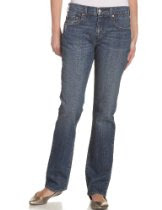
In 1853, the California gold rush was in full swing, and everyday items were in short supply. Levi Strauss, a 24-year-old German immigrant, left New York for San Francisco with a small supply of dry goods with the intention of opening a branch of his brother's New York dry goods business. Shortly after his arrival, a prospector wanted to know what Mr. Strauss was selling. When Strauss told him he had rough canvas to use for tents and wagon covers, the prospector said, "You should have brought pants!," saying he couldn’t find a pair of pants strong enough to last.
Denim Blue Jeans
Levi Strauss had the canvas made into waist overalls. Miners liked the pants, but complained that they tended to chafe. Levi Strauss substituted a twilled cotton cloth from France called "serge de Nimes." The fabric later became known as denim and the pants were nicknamed blue jeans.
Levi Strauss & Company
In 1873, Levi Strauss & Company began using the pocket stitch design. Levi Strauss and Nevada tailor David Jacobs co-patented the process of putting rivets in pants for strength. On May 20, 1873, they received U.S.Patent No.139,121. This date is now considered the official birthday of "blue jeans."The two-horse brand design was first used in 1886. The red tab attached to the left rear pocket was created in 1936 as a means of identifying Levi’s jeans at a distance. All are registered trademarks that are still in use.




